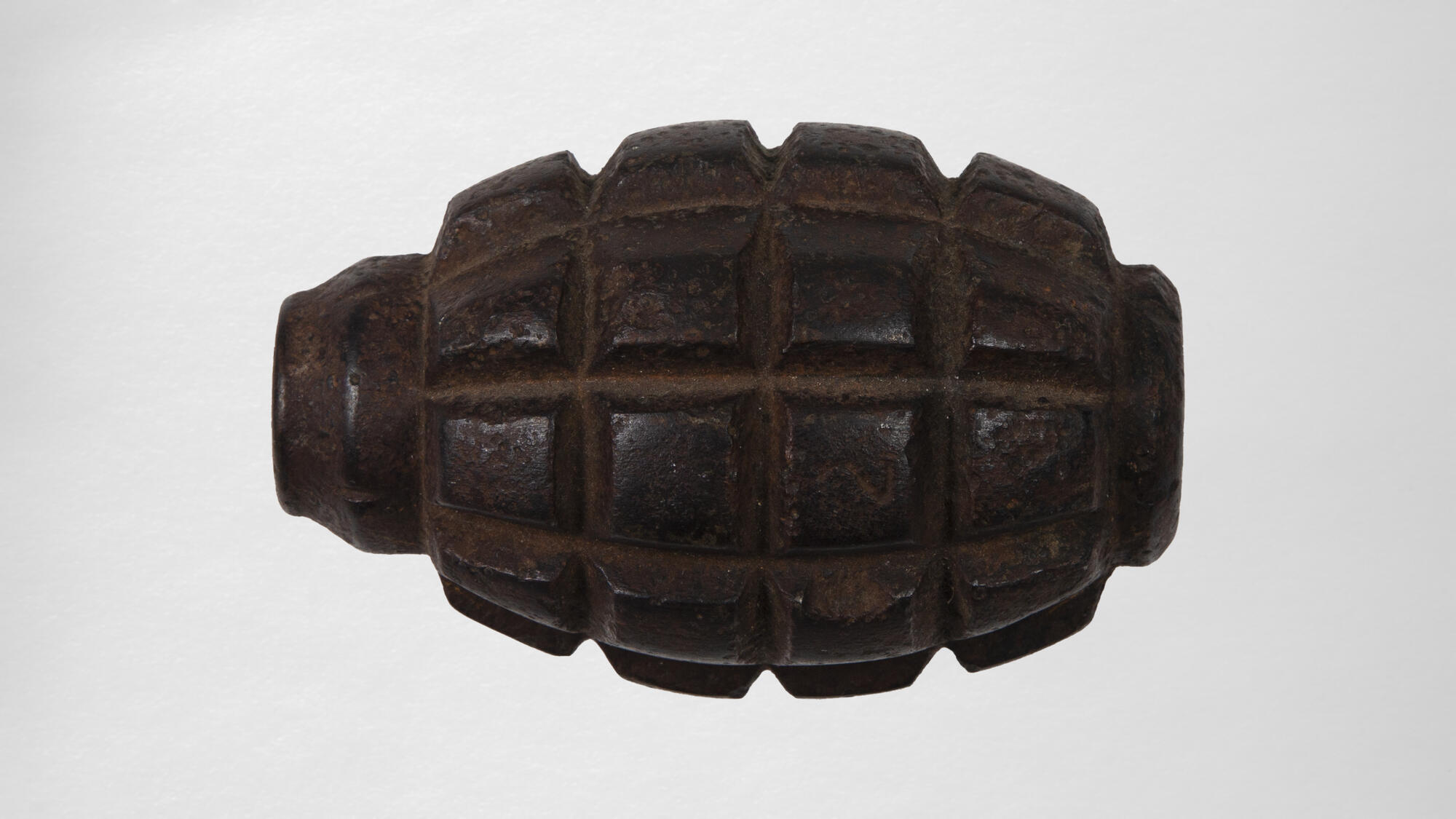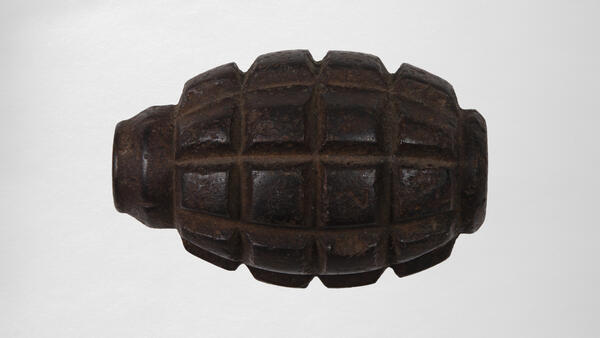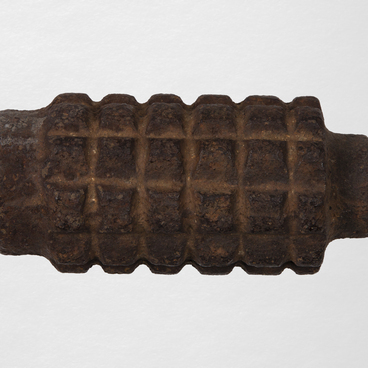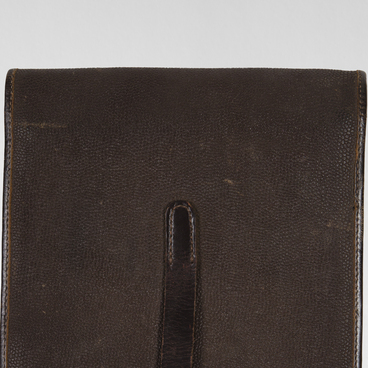The Zimovniki Museum of Local History displays an empty case of F-1 grenade, which was most common among the Soviet infantrymen during World War II. It was colloquially called “fenyusha”.
Grenades were used to eliminate enemy soldiers and cause maximum damage to them. This weapon was invented and used for the first time in the 1910s in France just before World War I. The first models had an imperfect fuse. Grenades could explode on any impact or jolt, so they had to be handled very carefully,
Later, an English engineer Captain Lemon improved the grenade. He invented a smooth case and a new, more reliable fuse with a pin, which did not require much care in handling. A new nickname appeared based on the inventor’s name — “limonka”. The name soon became popular in the Russian Empire, as the grenade looked similar to this fruit.
In the Soviet Union, the “limonka” fuse was modified and improved according to the system of the design engineer Fyodor Koveshnikov. The grenade began to explode 3.5–4.5 seconds after it was thrown.
In 1939, the grenade case was changed. Before, it was made of cast iron, which was then replaced with semisteel. This material gave more fragments during the explosion and increased the damaging effect.
In addition, special grooves appeared on the case along and across the body. The grenade exploded along these grooves. Because of these details, the British soldiers began to call it a “pineapple”, and the Balkan peninsula fighters — a “turtle”.
During the explosion, the grenade case split into hundreds of tiny fragments. Their maximum size was the size of a pea, and the minimum — the size of a match head. Each fragment had sharp ragged edges. During World War II, a new standardized hand grenade fuse.
The grenade had another feature: its fragments scattered over a huge distance — up to 200 meters. Because of this, the fighter who threw it could suffer. That is why the grenade was thrown only from cover.
Grenades were used to eliminate enemy soldiers and cause maximum damage to them. This weapon was invented and used for the first time in the 1910s in France just before World War I. The first models had an imperfect fuse. Grenades could explode on any impact or jolt, so they had to be handled very carefully,
Later, an English engineer Captain Lemon improved the grenade. He invented a smooth case and a new, more reliable fuse with a pin, which did not require much care in handling. A new nickname appeared based on the inventor’s name — “limonka”. The name soon became popular in the Russian Empire, as the grenade looked similar to this fruit.
In the Soviet Union, the “limonka” fuse was modified and improved according to the system of the design engineer Fyodor Koveshnikov. The grenade began to explode 3.5–4.5 seconds after it was thrown.
In 1939, the grenade case was changed. Before, it was made of cast iron, which was then replaced with semisteel. This material gave more fragments during the explosion and increased the damaging effect.
In addition, special grooves appeared on the case along and across the body. The grenade exploded along these grooves. Because of these details, the British soldiers began to call it a “pineapple”, and the Balkan peninsula fighters — a “turtle”.
During the explosion, the grenade case split into hundreds of tiny fragments. Their maximum size was the size of a pea, and the minimum — the size of a match head. Each fragment had sharp ragged edges. During World War II, a new standardized hand grenade fuse.
The grenade had another feature: its fragments scattered over a huge distance — up to 200 meters. Because of this, the fighter who threw it could suffer. That is why the grenade was thrown only from cover.



